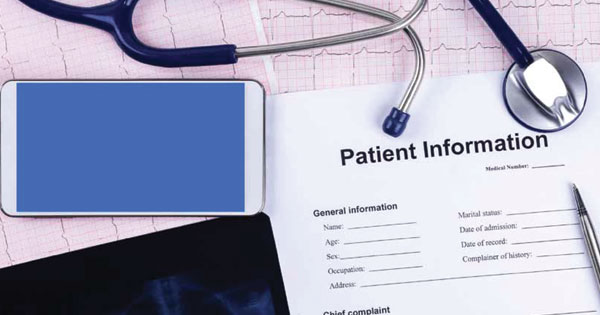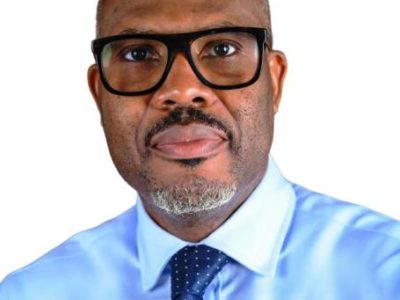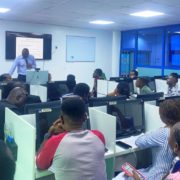By IT Edge News.NG
Highlights
- Country loses more than N81 billion annually to medical tourism
- Poor physical infrastructures and scarce health practitioners, makes e-health attractive
- Limited funding and shortage of medical manpower skilled in ICT limits e-health adoption
- Medical experts want telemedicine and eHealth integrated into medical/health training curricula
One of the global milestones in medicine is e-Health – leveraging on ICT to deliver efficient health care services to citizens. In the developed world, the introduction of ICT to the health sector has helped to bridge the relationship between patients and health service providers, and improve the transmission of data from institution to institution and the communications between health professionals.
But Nigeria seems to slumber in embracing e-health to address the challenges in its healthcare system. The country loses more than N81 billion annually to medical tourism, according to some recent reports. The gainers are India, Southm Africa, Dubai and some European countries where highly developed healthcare system integrated with ICT has helped to provide succor for many.
With poor physical infrastructures and scarce health practitioners, e-health has the potential to strengthen the country’s health service delivery once the right policy framework for ICT adoption in the health industry is adopted as has been the case in countries like India, Rwanda, Kenya and Uganda.
One of the country’s leaders in medical practice, Dr. Osahon Enabulele, blames limited funding and shortage of medical manpower skilled in ICT as major reasons e-health adoption has been slow. He said: “Whereas there is an overwhelming evidence that developing countries like India, Rwanda, Kenya and Uganda have greatly explored the potentials of e-health in transforming their health systems and economies, Nigeria is yet to enthrone a strategic policy for sustained utilisation of e-health in a way to maximise its alluring and undeniable benefits in strengthening Nigeria’s healthcare system, improving access of Nigerians to healthcare services in the face of limited resources and chronic shortage of medical/health manpower, improving medical education and research, improving the quality and efficiency of healthcare services and therefore improving the health and development indices of Nigeria.”
Nigeria’s health sector is notoriously underfunded and the industry is routinely besieged with labour crises. As we write, medical doctors are on a stay at home strike. The sector is long on poor funding, insufficient manpower, paucity of health infrastructures and absence of clear cut universal health policy or disposal insurance schemes to cover costly medicare; and very short on deliverables. There are four doctors for every 10,000 inhabitants in Nigeria. Medical statistics available have also shown that while 90% of ordinary citizens go to government hospitals for subsidized medical care, not more than 10% of practicing doctors are employed by these government health institutions. This means a long waiting time to get medical attention and a n urgent need to implement ehealth.
“The huge crowd that is often seen at any of the out-patient clinic of public hospitals can be so scary to any doctor who means well and have planned to meet up with the demands of all his patients as much as possible on any normal day. This is because while he has to attend to the large number of sick patients, listens to each one of their complaints, diagnose their ailments and make good prescriptions, he has to contend with the cumbersome nature in which the healthcare services are carried out which often times are frustrating and stressful even to the best of doctors,” said Professor Olumuyiwa Odusanya, the Provost of the Lagos State College of Medicine (LASUCOM) during the Second Olikoye Memorial Lecture at the 53rd Annual General Conference and delegates meeting of the Nigeria Medical Association in Lagos.
This affects the performance of the doctors as it often leaves them brain-fatigued as they have to work assiduously, while they are grossly underpaid. A challenge that has forced large number of medical practitioners to migrate to developed countries with better health care system and where the skills earns better remunerations.
In 2012, the Nigerian House Committee on Diaspora, lamenting the shortage of medical professionals in Nigeria, disclosed that 77 per cent of members of the Association of Black Doctors practising in the United States of America were Nigerians. To support this statistic, Dr. Osahon revealed last year in the media that only one in three registered Nigerian doctors’ practices in the country, the other two-thirds have migrated abroad.
According to Osahon, out of the 71,740 doctors registered with Medical and Dental Council, only about 27,000 are practising in Nigeria, while others are practising outside the shores of this country. Up to 7,000 Nigerian doctors work in British and the American public health sectors, while some have left the medical profession on account of better working conditions. That number seems to be far- short of the World Health Organisation (WHO) standard of one doctor to 600 patients.

What this mean for Nigeria’s healthcare system delivery is that patients are left in the hands of doctors, who are easily prone to medical errors due to long rigorous working hours, others are left unattended to, thus leading to their untimely death. Medical practitioners are only human after all. This also explains the high infant mortality rate. Going by the 2008 National Demographic Health Survey, the indicator is that infant mortality rate is 75 deaths per 1,000 live births, while the under-five mortality rate is 157 per 1,000 live births for the five-year period immediately preceding the survey. The neonatal mortality rate is 40 per 1,000 births. Thus, almost half of childhood deaths occurred during infancy, with one-quarter taking place during the first month of life.
The statistic shows that Nigeria’s infant mortality rate is better than only 13 other countries in the world. The number is alarming when compared to war ravaged Sudan’s 65 deaths in 1000 live births. It is also reported that Over 300,000 Nigerians die from malaria each year – more than in any other country. An estimated 250,000 are children younger than five. Currently, the Ebola Virus outbreak is crawling on the health sector but could have an explosive growth if not properly checked. Ebola has led to the death of many people in countries like Liberia, Guinea and Sierra Leone.
How can Nigeria leapfrog from this health dilemma? To Mr. Mustapha Danesi, Professor of Neurology, College of Medicine, University of Lagos, Nigeria, the only way is to incorporate the general use of Information Communications Technology systems in our day to day running of our health care systems. He said: “Medical practice in many developed and developing countries are now in stage 4 healthcare development which is the health system of the 21st century. In stage 4 healthcare practice, healthcare organizations have the characteristics of high performing organizations and focus on the six aims for improvement: safety, effectiveness, patient-centeredness, timeliness, efficiency and equity. Patients have as much control as they want over treatment decisions and services are coordinated across practices, with generous use of Information Communications Technology systems.”
Going by his argument, Nigeria is currently practising 19th or 20th century health care system in which Information Communications Technology tools are entirely absent. Therefore healthcare delivery system is highly fragmented, where physicians, hospitals and other healthcare organizations function autonomously. Patients rely on physician’s training and experience for guidance and physicians rely on their own experience to make best decisions. Patient’s role is passive and they have no control over treatment decisions.
According to Wikipedia, ‘e-Health covers the deployment of electronic/digital processes in health. While others use it in the narrower sense of healthcare practice using the internet, it can also include health applications and links on mobile phones, referred to as m-Health.’
The major advantage of e-Health is that it smoothen the communication of patients data between different health care professionals via electronic health records. It encourages treatment at a distance and real time monitoring of patients via telemedicine. It also includes the use of mobile devices in collecting patients’ health data to medical practitioners, researchers.
The importance of deploying ICT tools to health cannot be overemphasized. The key declaration of the World Summit on Information Society (WSIS) is aimed at ‘the potentials of ICT to among others reduce infant mortality rate, improve maternal health and combat HIV/AIDS, Malaria and other disease. To achieve this, it prescribes the connection of villages with ICTs and establishes community access points, scientific and research centres with ICTs and health centres and hospitals with ICTs. It also required that human capacity must be built and it encourages a Public Private Partnership (PPP).’
The World Health Organisation (WHO) is on the same page with the WSIS. The organisation as part of achieving the Millennium Development Goals, have come up with its own e-Health initiatives to focus on ‘the adoption and use of ICT for health systems development, the enhancement of a wider access of the public to health information and education and the execution of effective public health action through the collaboration and contribution of many stakeholders which includes citizens, health professionals, institutions, health authorities, researchers, academia and industry.’
As a result, African countries are beginning to set up e-health policies that will drive efficient healthcare delivery to their citizens. According to the ministry of health in Rwanda, as at 2008, Rwanda has one doctor for every 18,000 inhabitants. That prompted the country to initiate e-Health initiatives such as TRACnet (Treatment and Research AIDS Centre Network) a system for collecting HIV data which uses timely, IVR (Interactive Voice Response) to gather information through mobile phones and the web.
This system has not only made it easier for health workers to follow up on patients progress, it has also allow patients to receive better treatment due to the fact that doctor who has access to a patient’s record has a much easier job than a one without this information. Other e-health tools like TRACplus, SISCOM (Système Informatique de Santé Communautaire), e-MRS’s (Electronic Medical Records Systems) and LMIS’s (Logistics Management Information Systems), are channelled to address the challenges of lack of specialists and specialized services in rural areas that are only available in urban areas.
SISCOM (Système Informatique de Santé Communautaire) is a Telemedicine tool. It is text message system specifically built for maternal health. This application can connect three major hospitals in Rwanda. E-MRS’s (Electronic Medical Records Systems) and LMIS’s (Logistics Management Information Systems) are used for maintaining adequate drug stocks.
Last year, mTrac, a rapid SMS-based health tool, launched in December, 2011 in Uganda, to improve the Health Management Information System (HMIS) reporting on disease surveillance and medicine tracking systems, in all 5,000 health facilities in Uganda was listed among the table-top 10 e-health projects of 2013 and granted full recognition by the African Development Bank (AfDB).
Uganda has invested heavily on mHealth tehcnologies to enhance service with a focus on strengthening health systems for Maternal, Newborn, and Child Health (MNCH). There are three major MNCH projects: East African MNCH- Kitgum district Northern Uganda, Radio Distance Learning Program for VHTS –Kiboga district Central Uganda, and AIM project – Eastern (Busia District) and south Western Uganda (Kabale district).
According to World Vision International, a health publication, most of the projects are in their second year of implementation, excluding EAMNCH which is in its third year; the target is to improve MNCH through improved delivery of health services by strengthening health systems at all levels, community to national, in Uganda. And the country hopes this can be achieved via a number of models that include Timed & Targeted Counseling (ttC), Integrated Community Case Management (ICCM), and others related to Growth Monitoring and Community Led Behavior Change processes as a comprehensive package for sustained development.
eHealty in Nigeria
Similarly, Nigeria is beginning to witness eHealth initiatives in areas like mobile drug authentication, blood donations and the rest. Recently a group of software developers in Nigeria, to solve the problem of access to safe-blood, developed an application called Lifebank that makes it easy to give and receive blood in Nigeria. The use of mobile phone has also helped in the fight for drug counterfeiting. With an SMS enabled technology driven by Sproxil, a global brand protection specialist, consumers can determine if a drug is fake or not by just sending an SMS via their mobile phones. In Ondo State, the state government’s Abiye Safe Motherhood project which provides a mobile phone for each registered pregnant woman free of charge, and with a toll free prepaid by government to access and ensures information flow with health practioners has drastically reduced the maternal and infant mortality rate in the state.
Much of these eHealth initiatives witnessed in Nigeria are being driven by the private sector, as there is a total absence of a National electronic health (eHealth) strategy despite the formulation of a National Health Policy and the National Strategic Health Development Plan Framework (2009 – 2015), developed by the Federal Ministry of Health, in conjunction with the National Information Technology Development Agency (NITDA).
While many medical experts argued that telemedicine and eHealth should be integrated into the curriculum of medical/health training institutions in the country, Dr. Wole Awosika, a medical consultant in Lagos, maintained that the National Health Policy and the National Strategic Health Development Plan Framework (2009 – 2015) are key documents that lay the foundation for a national eHealth policy in Nigeria. He thinks the government lacks the willpower to implement the policy also like it failed in implementing past reforms. Like Dr. Muhammed Lecky, Senior Strategic Advisor, International Development Research Centre/Nigeria Evidence-Base Health Systems Strengthening Initiative, succinctly puts it “every attempt to achieve coherence in the form of an articulated policy framework regarding telemedicine and eHealth in Nigeria had hitherto proven abortive.”
The Strategic Plan for ICT4D in the Nigerian Health sector also identified the need for the deployment of ICT to healthcare delivery in urban and remote parts of the country. It focuses on the creation of a National Health Information Systems, a Telemedicine programme, Practitioners Data Exchange, Public Awareness in Disease Prevention and Human Capital Development using ICT/Online education. One unique requirement of this plan is the establishment of a national medical web portal by the Federal Government, the medium through which the health services professionals, practitioners and stakeholders will exchange and share information.
Battling challenges like availability of electricity and network services are crucial if Nigeria hopes to deliver efficient ICT enhanced healthcare service to its citizen nationwide especially remote areas. Just like Uganda, Nigeria can also invest on the use of mobile devices (mhealth) in delivery healthcare services, as it has one the highest rate of mobile phone penetration in the continent. According to PricewaterhouseCoopers (PwC), mobile health (mHealth) applications such as text messages could save 147,000 Nigerian lives lost annually to HIV/AIDS, tuberculosis (TB), malaria and pregnancy-related conditions.




























